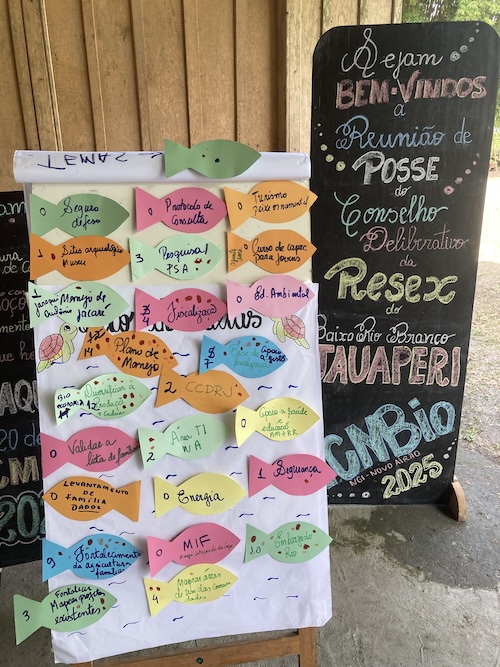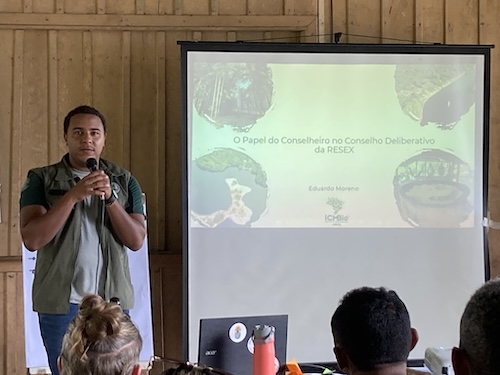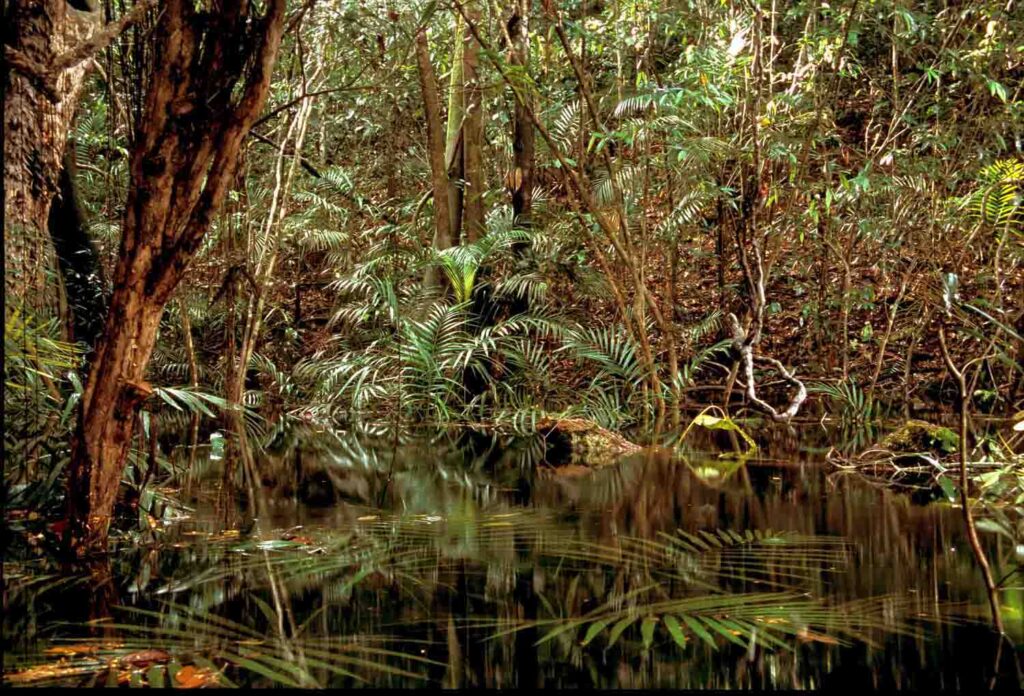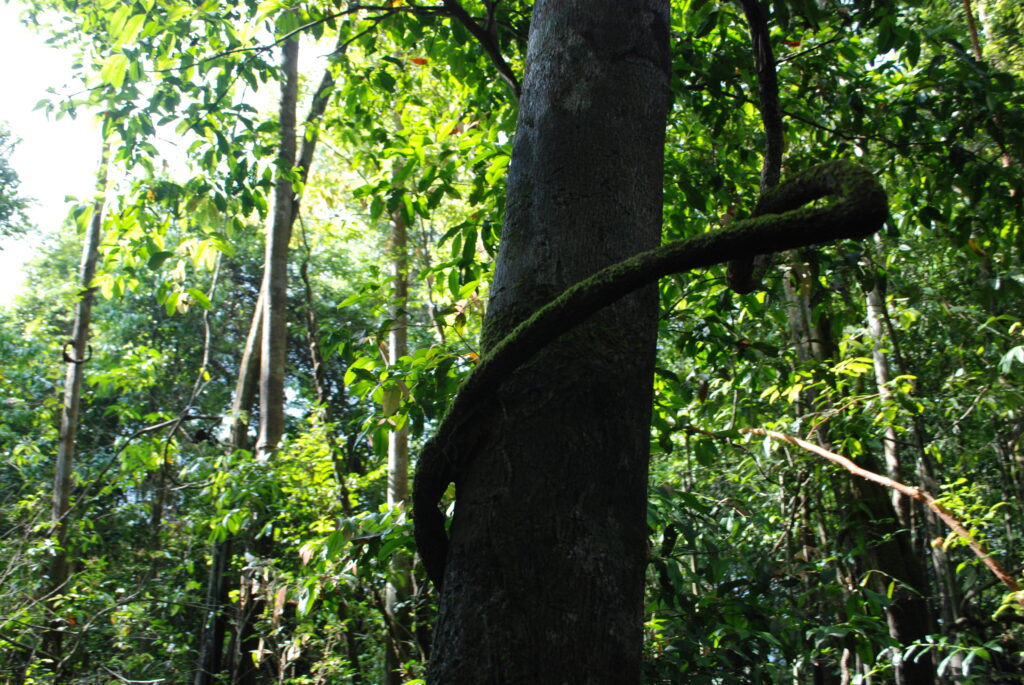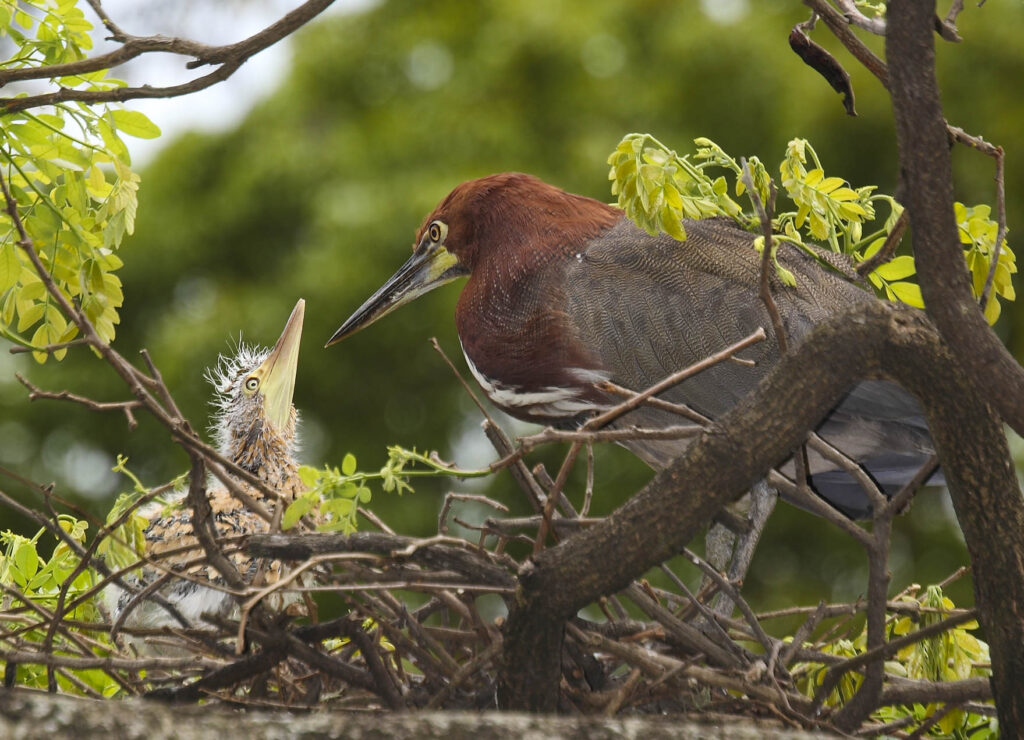A New Step Towards Conservation and Sustainability in the Baixo Rio Branco-Jauaperi Reserve: The Deliberative Council
Between February 19 and 20, 2025, the first official meeting of the Deliberative Council of the Baixo Rio Branco-Jauaperi Extractive Reserve (Resex) took place. The meeting, held in the Itaquera Community, on the Jauaperi River, brought together various community leaders and local grassroots organizations, as well as government representatives, researchers, and third-sector organizations—including Amazônia and its partner organization Amazon Charitable Trust.
Brief History of the Creation of the Reserve
The history of the Baixo Rio Branco-Jauaperi Reserve began in the early 2000s, when traditional residents, riverine communities and Indigenous peoples, supported by civil society organizations, initiated a mobilization process with the federal government to establish a Protected Area in the region. At the time, the territory—situated on the border between the states of Roraima and Amazonas—faced strong pressures from logging interests, agribusiness, and the intensive use of natural resources, especially timber and fishing, due to the abundance of fish in the Jauaperi River.
After 17 years of mobilization and resistance, in 2018, Baixo Rio Branco-Jauaperi Extractive Reserve was finally officially recognized, acknowledging the need to protect local biodiversity and ensure the survival of the extractive population in the region. Read more here.
The Importance of Planning and Management
However, the mere creation of a Protected Area does not, in itself, guarantee the effective protection of the territory and its traditional peoples. It is essential to have planning and investment in resources—both financial and human—to ensure the proper management of the region, under the responsibility of the Chico Mendes Institute for Biodiversity Conservation (ICMBio). Protected Areas in Brazil follow the guidelines of the National System of Nature Conservation Units (SNUC), which provides mechanisms for the participation of traditional communities in Sustainable Use Conservation Units, such as Extractive Reserves. One of these mechanisms is precisely the Deliberative Council, a forum for dialogue and decision-making that directly impacts the territory and its residents.
The First Official Meeting of the Deliberative Council
Seven years after its official recognition, the Baixo Rio Branco-Jauaperi Reserve took a crucial step: on February 19, 2025, the Deliberative Council was officially established. Composed of 38 seats—20 for communities and local organizations, 13 for government, research, and educational institutions, and 5 for civil society organizations—the Council was sworn in by Hueliton Ferreira, Head of the Integrated Management Center of ICMBio in Novo Airão. Over the two-day meeting, in addition to the swearing-in ceremony, training sessions were provided to the new council members, and priority topics for the protection of the Reserve were discussed, such as the installation of an ICMBio support base, as well as sustainable development for local communities, focusing on fishing, agriculture, and extractivism.
Key Topics and Priorities
During the meeting, the council members identified several priority areas, including:
- Development of the Reserve Management Plan
- Bioeconomy
- Lifting of the Fishing Restrictions on the Jauaperi River
- Strengthening Family Agriculture
For each topic, working subgroups and Thematic Chambers were formed, responsible for drafting action plans to be implemented throughout 2025.
The Bioeconomy Thematic Chamber
Amazônia and Amazon Charitable Trust took the lead in coordinating the Bioeconomy Thematic Chamber, alongside other civil society organizations and some local community representatives. The objective is to strengthen and develop extractivism and sociobiodiversity chains, meaning alternative income generation opportunities for local populations while preserving the forest and respecting traditional ways of life.
Among the planned actions, key initiatives include: mapping existing initiatives in the region, collaborating with research, education, and technical assistance institutions, promoting exchanges and market access that enhance the value of sociobiodiversity products and ensure fair prices.
Next Steps and Acknowledgments
Amazônia expresses its gratitude to the residents of the Baixo Rio Branco-Jauaperi Reserve, who have actively fought for and supported the development of initiatives in the region, and to its partner Amazon Charitable Trust for its continuous support and participation in this process. It also congratulates the team of the Integrated Management Center of Novo Airão of ICMBio for this important achievement, as well as all the other partner institutions that now form the Deliberative Council. This represents a significant step towards the protection of one of the richest and most important regions in the heart of the Amazon Rainforest, promoting a participatory management model that values and protects both the biodiversity and the traditional communities that inhabit it.
To learn more about the actions of the Deliberative Council of the Resex of Baixo Rio Branco-Jauaperi and follow the next steps of the project, continue following us here on the blog and on our social media channels.
To learn more, read this article (in Portuguese).


